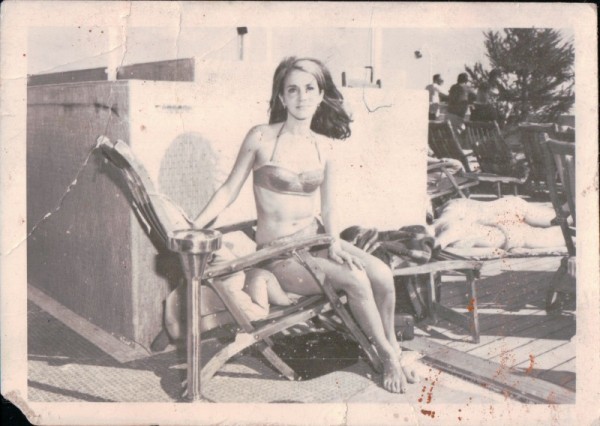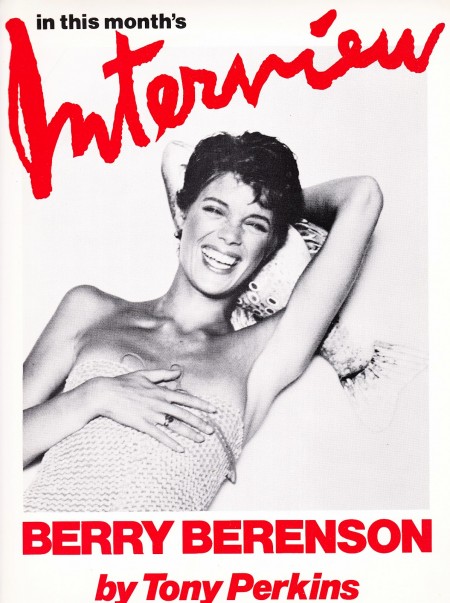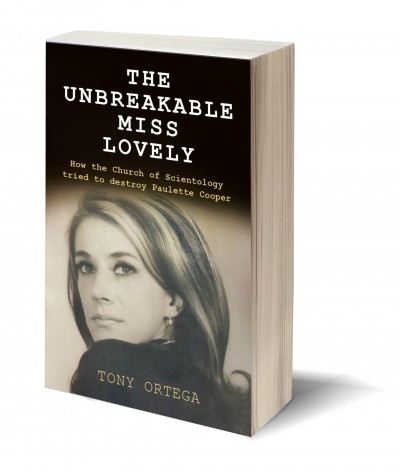We are continuing to make use of material we learned as we researched the amazing life of author Paulette Cooper, but which, for one reason or another, we were not able to use in our book about her, The Unbreakable Miss Lovely, which was published last month. In this case, we have a parable of time and space.
In 1993, a movie starring Will Smith playing a con man premiered to strong reviews. Six Degrees of Separation was an adaptation of a 1990 stage play of the same name, which was in turn based on the exploits of an actual con man, David Hampton, who preyed on numerous wealthy Manhattan families in the 1980s by convincing them that he was the son of actor Sidney Poitier.
The film popularized the idea that every human being, through his or her acquaintances, is only six degrees of separation from any other human being, if one can only trace the connections. It also helped propel Smith’s career from television star to major movie actor.
Fifteen years after the film, Will Smith found himself the subject of a protest when he and his wife, Jada Pinkett Smith, opened a private school in Calabasas, California. The Smiths had decided that the school would use Scientology “study tech” designed by L. Ron Hubbard as its curriculum, and the timing — 2008, at the height of the Anonymous movement’s anti-Scientology interest — produced a picket line and negative press. We’ve written previously that although the school’s first principal, Jacqueline Olivier, was under strict instructions from the Smiths to enforce Scientology methods, Will himself was only dabbling in Hubbard’s “technology,” and today he’s left it behind.
The con man Smith played in Six Degrees of Separation, David Hampton, was angry that his life had been turned into a play and then film, and he harassed David Guare, the writer who turned his life into such a profitable tale, and he filed a $100 million suit against Guare which was later dismissed. Hampton died in 2003 of AIDS-related complications.
Will Smith wasn’t the only one whose career was boosted by the movie. For Stockard Channing, it was her most successful film after her appearance in the movie Grease fifteen years earlier. She played the principal character Ouisa in both the stage and film versions.
The film also provided a small part for another actress better known for her earlier success. Kitty Carlisle Hart was 83 when Six Degrees opened; she played the role of a wealthy socialite. Kitty Carlisle had starred in movies early in her career, but she was most well known for the many years she appeared on television game shows, usually as a celebrity panelist. Late in her life, her return to movies was a treat for her fans.
Giovanni Schiaparelli was a skilled and prolific Italian astronomer who will forever be remembered for his biggest mistake. Observing the planet Mars at the limit of his telescope’s effectiveness, Schiaparelli in 1877 believed he had observed striations on the planet that he thought resembled channels. When his work was translated, the Italian word for channels, canali, excited the British and American press, who misinterpreted what Schiaparelli reported. The notion that purpose-built “canals” existed on Mars seized the imagination and, to some degree, has never let go. Later, better instruments proved that not only were there no artificial canals on Mars, but Schiaparelli’s channels were just optical illusions. But to this day, the idea of Martians or other visitors coming from outer space is one that never goes away, in part propelled by the use of instruments in ways they weren’t designed for.
When personal video cameras flooded the market, for example, users unfamiliar with optics, focus, and the limits of video tape convinced themselves that out of focus streetlamps were flying saucers, or that insects flying through the frame were extended “rods” that lived in the atmosphere but were invisible to the human eye. Improving cameras has helped somewhat, but there will always be people who misunderstand what a device is really good for and what it actually measures.
Schiaparelli died in Milan on July 4, 1910, and the next year, on March 13, a child was born in the United States, Lafayette Ronald Hubbard, who had in his future one of the most creative mashups of Martians, space tales, and a machine misused to convince people that it was measuring something real. Hubbard, in 1950, announced that he’d discovered for the first time the actual nature of the human mind when he published Dianetics: The Modern Science of Mental Health. Two years later, he created an organization he called Scientology that made use of a crude galvanometer he claimed could read a person’s mind. It actually measured tiny fluctuations in an electrical current passing through a user’s skin, but like Schiaparelli and his telescope, the desire to believe what one sees convinces Scientologists that the device is measuring the “mass” of their thoughts and can convince them that “memories” they have of events that occurred millions of years ago are real.
Adding to the powerful idea that they were the only ones who could discern the actual nature of the universe, Hubbard instilled strict information control and secrecy over his organization, which by the 1960s had grown to tens of thousands of followers around the world. But then, in 1971, a Manhattan magazine freelance writer, Paulette Cooper, published one of the first popular exposes about the organization, a book titled The Scandal of Scientology.
Hubbard had the spy wing of his movement then throw its resources behind having her destroyed.
The idea that one is part of a group which has the answers to life’s questions can be a powerfully insular one — a “crushing certainty” Lawrence Wright called it in Alex Gibney’s film Going Clear, about the shocking things Scientologists are capable of doing in the name of L. Ron Hubbard and his “E-meter.”
Near the beginning of the film, Wright explains that he had found a similar crushing certainty in radical Islam. Before his book on Scientology, he had won a Pulitzer Prize for his book on the 9/11 attacks, The Looming Tower.
Wright, like others, had wanted to understand the mentality of a man like Mohamed Atta — a college-educated architect whose embrace of radical Islam allowed him to take over and pilot American Airlines Flight 11 early on the morning of September 11, 2001, with four other hijackers.
After seizing control of the aircraft after its takeoff from Logan Airport in Boston, Atta turned the plane south and headed for New York City. At 8:46 and thirty seconds in the morning, the Boeing 767-223ER flew into the north tower of the World Trade Center in lower Manhattan. All 92 people aboard were killed instantly.
Among them were several well known people in the entertainment industry. David Angell had been a staff writer for the sitcom Cheers and had produced and helped create the series Frasier. Family Guy creator Seth McFarlane had a ticket for the flight but arrived at the airport too late to catch it.
Also on the flight was an actress named Berry Berenson. In 1973, she raised eyebrows when she married the actor Anthony Perkins, who was known to have been involved romantically with men. They had two sons — Oz Perkins is an actor, Elvis Perkins is a musician — and Berry was with Tony Perkins when he died of AIDS-related complications in 1992.
In the aftermath of the 9/11 attacks, it was exceedingly difficult to identify victims, particular those who had been on the planes that struck the World Trade Center buildings. But among several mementos that were found in the rubble was a sterling silver ring with a gold cross.
Two of Berry Berenson’s friends said they instantly recognized the ring, because they each had copies of it that Berry had given them. Donna Dixon, an actress married to actor Dan Aykroyd, and art gallery owner Nuni Boylan each had rings that matched the one that was found.
“I see it as a miraculous gift that they would have this – and a loving message from Berry,” Boylan said of the police, who had found the artifact.
Stories about Berenson pointed out that she not only had been the widow of Tony Perkins, but that she’d come from a rather illustrious family — her grandmother was a famous women’s clothes designer who had been Coco Chanel’s biggest rival. Her name was Elsa Schiaparelli, and she was the niece of the great Italian astronomer.
We’re on a television set, and three figures appear out of the shadows. They are three young women who generally resemble each other. The gimmick of the show, To Tell the Truth, is that each of the young women is asked to give their names, and each of them says the same thing.
“My name is Paulette Cooper,” each of the women say when it’s their turn.
The celebrity panel is then told what the real Paulette Cooper is known for — she’s the first woman in history to stow away successfully on a cruise liner. In the winter of 1970, Paulette had sailed on a weeklong cruise to the Caribbean on the Leonardo da Vinci without a ticket. She managed to pull it off not by hiding, but by being very conspicuous, spending a lot of time in one of the ship’s lounges and dodging the advances of single men.
Each of the three contestants tries to convince the celebrities that she is the young woman who had spent a week aboard the Leonardo da Vinci, and the panel does its best to discern what is truth and what is lies.
It’s not always easy to tell. Not with the way people can fool others, and fool themselves, about what’s true and what’s deceit.
But one member of the celebrity panel says she has the answer, and it turns out she’s right.
And Kitty Carlisle picks the correct Paulette Cooper and not one of the two imposters, one of whom is a young Berry Berenson.
——————–
BOOK NOTES
Check out the interactive map to our ongoing tour.
We didn’t get a chance to include photos in our book, The Unbreakable Miss Lovely, so we’re posting them at the Underground Bunker. We’ve created a dedicated page for them, and we hope you go through them all, then come back here and tell us your thoughts!
Copies of the paperback version of ‘The Unbreakable Miss Lovely’ are on sale at Amazon. The Kindle edition is also available, and shipping instantly.
Our appearances…
June 11: New York City (with Paulette Cooper) 5:30 to 7 pm. We’re keeping the venue on the down-low at this point. If you’re interested in coming to this unique event — Paulette in New York talking about Scientology where her story began — drop us a line so we get an idea how many are coming.
June 20: Chicago (with Christian Stolte) The Annoyance Theater, 5pm: This event is SOLD OUT.
June 22: Toronto (with Paulette Cooper) Toronto Public Library, 40 Orchard View Blvd, 7:30 pm, sponsored by the Centre for Inquiry-Canada
June 23: Toronto (with Paulette Cooper) The “Getting Clear” conference
June 28: Clearwater, Florida (with Paulette Cooper) Clearwater Public Library, 2 pm
July 12: Washington DC, Center for Inquiry (with Paulette Cooper)
Late July/Early August: ENGLAND
——————–
Posted by Tony Ortega on June 2, 2015 at 07:00
E-mail your tips and story ideas to tonyo94@gmail.com or follow us on Twitter. We post behind-the-scenes updates at our Facebook author page. Here at the Bunker we try to have a post up every morning at 7 AM Eastern (Noon GMT), and on some days we post an afternoon story at around 2 PM. After every new story we send out an alert to our e-mail list and our FB page.
Learn about Scientology with our numerous series with experts…
BLOGGING DIANETICS: We read Scientology’s founding text cover to cover with the help of LA attorney and former church member Vance Woodward
UP THE BRIDGE: Claire Headley and Bruce Hines train us as Scientologists
GETTING OUR ETHICS IN: Jefferson Hawkins explains Scientology’s system of justice
SCIENTOLOGY MYTHBUSTING: Historian Jon Atack discusses key Scientology concepts
PZ Myers reads L. Ron Hubbard’s “A History of Man” | Scientology’s Master Spies | Scientology’s Private Dancer
The mystery of the richest Scientologist and his wayward sons | Scientology’s shocking mistreatment of the mentally ill
The Underground Bunker’s Official Theme Song | The Underground Bunker FAQ
Our Guide to Alex Gibney’s film ‘Going Clear,’ and our pages about its principal figures…
Jason Beghe | Tom DeVocht | Sara Goldberg | Paul Haggis | Mark “Marty” Rathbun | Mike Rinder | Spanky Taylor | Hana Whitfield









